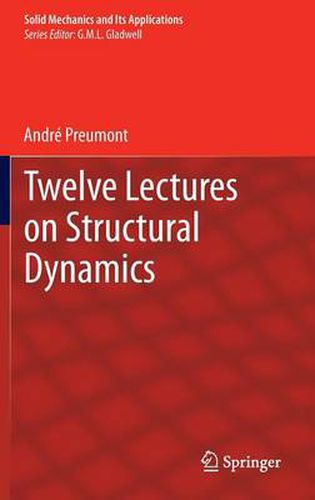Readings Newsletter
Become a Readings Member to make your shopping experience even easier.
Sign in or sign up for free!
You’re not far away from qualifying for FREE standard shipping within Australia
You’ve qualified for FREE standard shipping within Australia
The cart is loading…






This title is printed to order. This book may have been self-published. If so, we cannot guarantee the quality of the content. In the main most books will have gone through the editing process however some may not. We therefore suggest that you be aware of this before ordering this book. If in doubt check either the author or publisher’s details as we are unable to accept any returns unless they are faulty. Please contact us if you have any questions.
This text addresses the modeling of vibrating systems with the perspective of finding the model of minimum complexity which accounts for the physics of the phenomena at play. The first half of the book (Ch.1-6) deals with the dynamics of discrete and continuous mechanical systems; the classical approach emphasizes the use of Lagrange’s equations. The second half of the book (Ch.7-12) deals with more advanced topics, rarely encountered in the existing literature: seismic excitation, random vibration (including fatigue), rotor dynamics, vibration isolation and dynamic vibration absorbers; the final chapter is an introduction to active control of vibrations.
The first part of this text may be used as a one semester course for 3rd year students in Mechanical, Aerospace or Civil Engineering. The second part of the text is intended for graduate classes. A set of problems is provided at the end of every chapter.
The author has a 35 years experience in various aspects of Structural dynamics, both in industry (nuclear and aerospace) and in academia; he was one of the pioneers in the field of active structures. He is the author of several books on random vibration, active structures and structural control.
$9.00 standard shipping within Australia
FREE standard shipping within Australia for orders over $100.00
Express & International shipping calculated at checkout
This title is printed to order. This book may have been self-published. If so, we cannot guarantee the quality of the content. In the main most books will have gone through the editing process however some may not. We therefore suggest that you be aware of this before ordering this book. If in doubt check either the author or publisher’s details as we are unable to accept any returns unless they are faulty. Please contact us if you have any questions.
This text addresses the modeling of vibrating systems with the perspective of finding the model of minimum complexity which accounts for the physics of the phenomena at play. The first half of the book (Ch.1-6) deals with the dynamics of discrete and continuous mechanical systems; the classical approach emphasizes the use of Lagrange’s equations. The second half of the book (Ch.7-12) deals with more advanced topics, rarely encountered in the existing literature: seismic excitation, random vibration (including fatigue), rotor dynamics, vibration isolation and dynamic vibration absorbers; the final chapter is an introduction to active control of vibrations.
The first part of this text may be used as a one semester course for 3rd year students in Mechanical, Aerospace or Civil Engineering. The second part of the text is intended for graduate classes. A set of problems is provided at the end of every chapter.
The author has a 35 years experience in various aspects of Structural dynamics, both in industry (nuclear and aerospace) and in academia; he was one of the pioneers in the field of active structures. He is the author of several books on random vibration, active structures and structural control.